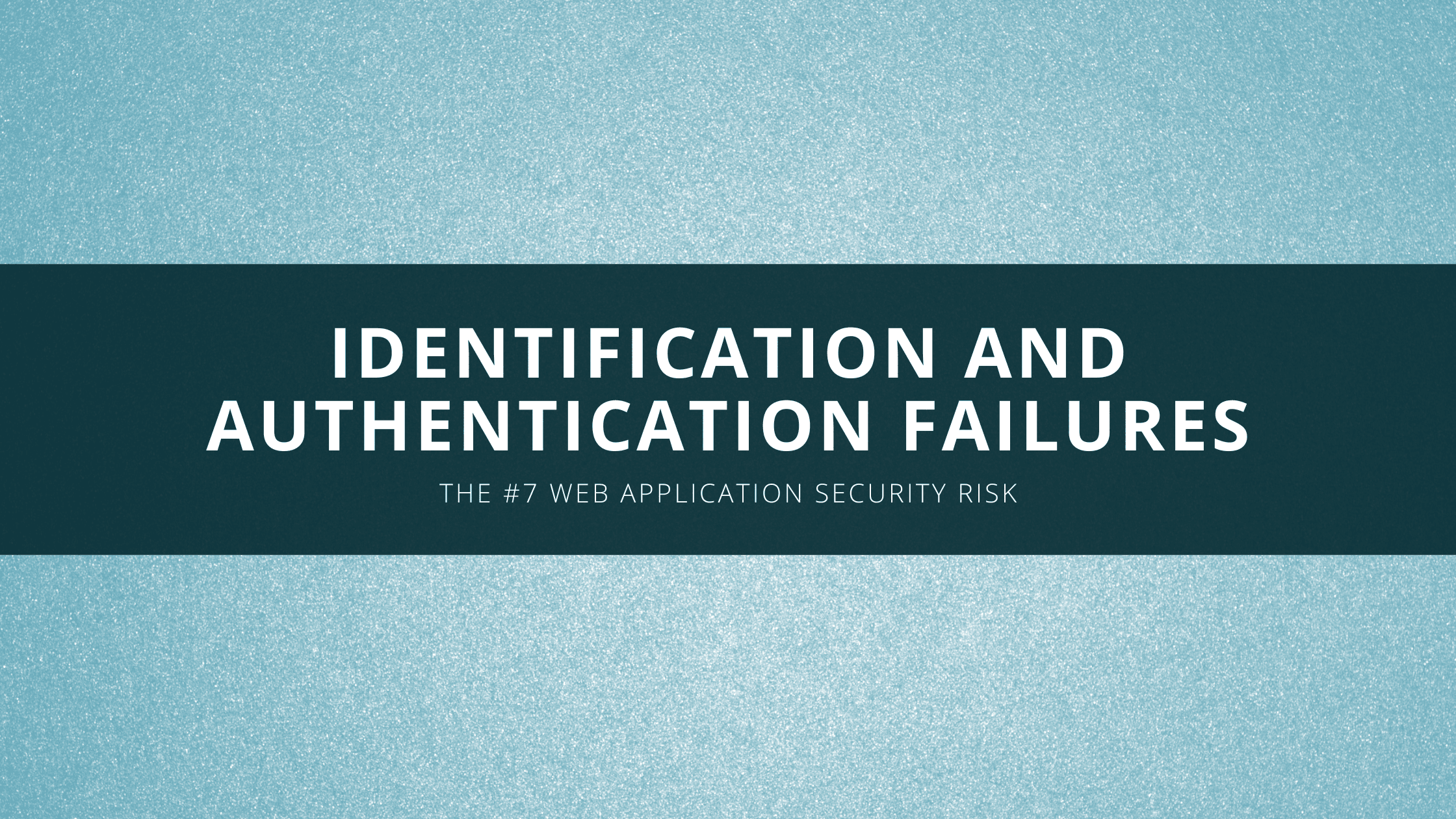Table of Contents
Identification and Authentication Failures – The #7 Web Application Security Risk
Authentication and identification failures remain a top risk for web applications and systems that allow user access. As developers, we are responsible for properly confirming user identities before granting access to protected resources. However, there are numerous vulnerabilities that can allow malicious actors to bypass even strong authentication mechanisms.
The recently released OWASP Top 10 2021 list ranks Identification and Authentication Failures as the 7th biggest web application security risk. This risk covers vulnerabilities that stem from not properly verifying user identities. It contains almost 4000 CVEs and over 130,000 recorded instances.
| CWEs Mapped | 22 |
| Max Incidence Rate | 14.84% |
| Avg Incidence Rate | 2.55% |
| Avg Weighted Exploit | 7.40 |
| Avg Weighted Impact | 6.50 |
| Max Coverage | 79.51% |
| Avg Coverage | 45.72% |
| Total Occurrences | 132,195 |
| Total CVEs | 3,897 |
Common Weaknesses in Authentication Systems
Some common authentication weaknesses include:
Use of hard-coded credentials – Hard-coding login credentials into an application’s source code risks exposing them. Credentials should never be hard-coded.
Session hijacking – An attacker can hijack active user sessions that haven’t expired, allowing access without reauthentication.
Weak password recovery – If password recovery methods like security questions are weak, accounts can easily be taken over.
Additionally, automated credential stuffing attacks are extremely common. These involve using leaked username and password lists from previous breaches and systematically trying the combinations across applications. Implementing protections against brute force login attempts can help mitigate this.
Implementing Secure Authentication
There are several best practices for implementing secure user authentication, including:
Use strong password requirements like minimum lengths, complexity, expiration policies etc. Consider multi-factor authentication for sensitive resources.
Establish short session timeout periods and require reauthentication for sensitive operations. This limits the attack surface for takeovers.
Lock accounts after a limited number of incorrect login attempts to hinder brute force.
Ensure password recovery flows don’t allow takeovers through email spoofing or by using weak backup authentication methods.
Additionally, monitoring systems for suspicious authentication patterns can help detect brute force and automated credential stuffing attacks. Alerting administrators of such threats allows blocking malicious IP ranges at firewalls.
Fostering A Security-First Culture
While technical controls are crucial for securing authentication systems, establishing strong organizational processes and policies are equally important for managing user identities and access.
For starters, organizations should have established user onboarding and offboarding procedures. Granting temporary or alternate access should have an audit trail with automated expiration.
Moreover, fostering a culture of security-first thinking ensures teams proactively assess authentication risks in applications instead of treating it as an afterthought. Encouraging developers to adopt secure coding best practices also minimizes the chance for easily avoidable mistakes like hard-coded secrets.
By recognizing authentication as a critical application component and hardening it against common weaknesses, organizations can drastically reduce their risk against data breaches through account takeovers. Monitoring systems for suspicious access patterns provides another layer of protection. With cybersecurity threats increasing in sophistication, strengthening user identity verification serves as a key first line of defense.
We hope this post helped in learning about OWASP Top #7 application security risk Identification and Authentication Failures. Thanks for reading this post. Please share this post and help secure the digital world. Visit our website, thesecmaster.com, and our social media page on Facebook, LinkedIn, Twitter, Telegram, Tumblr, Medium, and Instagram and subscribe to receive updates like this.
You may also like these articles:
Understanding the OWASP Top 10 2021 Application Security Risks
Broken Access Control – The #1 Web Application Security Risk
Passwordless Authentication- Things Every Business and Individual Should Know About
What is an MFA Fatigue Attack? How to Defend Against an MFA Fatigue Attack?
How to Set Up Multifactor Authentication on Your Windows 11?
Rajeshwari KA
Rajeshwari KA is a Software Architect who has worked on full-stack development, Software Design, and Architecture for small and large-scale mission-critical applications in her 18 + years of experience.
